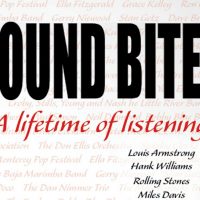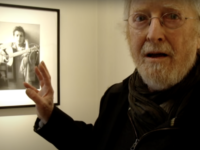“[Ted Nugent] could not write a decent song if his life depended on it.”
Wango tango, wango tango, wango tango – Ooh yeah!
All kidding aside, sure, it’s hard to define exactly what makes a good songwriter, simply because defining “good” is often itself a pretty subjective task. For some, the easy answer is that good songwriting is about “expressing one’s thoughts or emotions,” or “writing about what you know.” And yes, there are writers who approach their art in that manner, but that process is by no means axiomatic.
However, by eliminating the need to justify what exactly goes into the quality of “goodness,” the definition of an artist who engages in an act of musical and lyrical creation becomes more accurate and self-evident: simply put, a songwriter is one who writes songs.
Some recent releases illustrate the point. First of all, consider the massive Tom Petty retrospective, An American Treasure. In its deluxe form, the set contains a massive 63 tracks, including alternate mixes of studio recordings, assorted album cuts, live versions, and previously unreleased tracks.
As most people know, Tom Petty died suddenly and unexpectedly late last year, so An American Treasure can be seen to serve three functions: first, as a tribute; second, as an updated career summation; and finally, as a way to fill in a few gaps not addressed by the series of compilations released between 1993 and 2000 (Greatest Hits, Playback, and Anthology: Through the Years). Interestingly, the decision was made to not include the obvious and already compiled hits; however, rumor is that indeed such a collection is slated for early next year. Still, there’s a lot here, and that just goes to show how deep Petty’s catalog ran. In many cases, the alternate takes are just as interesting as the official releases, and the outtakes that never made the final running order on any given album are gems, as well.
But it’s the breadth and scope of Tom Petty’s writing that’s so astounding on An American Treasure; the quality is very consistent, whether any particular song was destined to be a hit or not. For instance, a straight-ahead rocker like “Lonesome Dave” covers a lot of bases, bemoaning the ascendancy of disco over rock ‘n’ roll while still maintaining a tongue-in-cheek sense of humor (“I’d run around in the parking lot / I’d drink some beer and I’d get in a fight”). Another previously unreleased cut, “Two Men Talking” is simply a monster riff that grooves hard and lets the Heartbreakers show just how well they could carry off their leader’s vision.
The final cut, a live version of Mudcrutch’s “Hungry No More” achieves a majesty only hinted at the in the studio version. Like most of the tracks on An American Treasure, it reframes the context of Tom Petty’s strengths as a songwriter: It wasn’t just about writing great hits; it was also about the work ethic and effort that Petty put into his art, which enabled him to apply his talent to everything he created.
Another way to focus on songwriters and their craft is to follow them through their processes of creation. This is something often easier said than done, as the listener usually only gets to hear the final product.
However, the most recent release in Bob Dylan’s “Bootleg” series, More Blood, More Tracks: The Bootleg Series Vol. 14 gives listeners the opportunity to gain some insight into the making of Dylan’s 1975 masterpiece, Blood on the Tracks. Hailed as one of Dylan’s most subtle and intimate albums, it turns out that his original concept was even more subtle and stripped down. Dylan got as far as putting together a test pressing or acetate, but upon reflection, returned to the studio to rerecord much of the album.
For those curious as to how the original might have sounded, More Blood, More Tracks is available in a single-disc edition which includes the sparse, acoustic performances that reflect the intent of the original album (plus one outtake), while the deluxe version is a six-disc set of the complete sessions with multiple takes of the songs. It’s probably not for the casual fan, but for those who can appreciate it, the deluxe release goes a long way toward providing some insight into the care and detail that Bob Dylan invested into his work.
Finally there’s Joe Strummer 001, a compilation of assorted tracks from the former lead singer of the Clash. This album serves a much different function that either the Tom Petty or Bob Dylan offerings mentioned previously. This album, arriving 16 years after Joe Strummer passed away at age 50 of an undiagnosed congenital heart condition, doesn’t have the same immediate post-tragedy impact of the Petty collection, nor does it have the familiarity inherent in Dylan’s classic material.
But it does show that Joe Strummer was always very much a working artist and musician, and continued to spend a lot of time recording and writing even during his so-called “wilderness years.” And as it turns out, he was also quite a packrat when it came to his own material.
Consequently, this assemblage shows off many facets of Strummer’s great range of interests, including his pre-Clash recordings with his pub-rock band the 101ers, assorted soundtrack contributions, selected album cuts, collaborations, and previously unreleased home recordings. One can only wonder what else he might have achieved had he lived another decade or two.
Tom Petty, Bob Dylan, Joe Strummer: good songwriters, all of them; and good writers whose contributions to rock and roll are felt now and will certainly continue to be felt for years to come.
- How David Bowie’s ‘The Next Day’ Stripped Away All of the Artifice - March 15, 2023
- Why Deep Purple’s ‘Who Do We Think We Are?’ Deserves Another Listen - January 11, 2023
- In Defense of the Often-Overlooked Mott the Hoople - November 10, 2022




